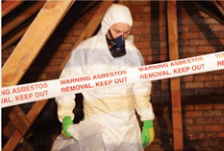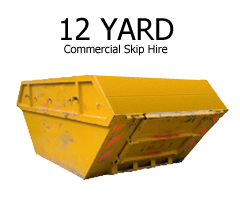Asbestos is a naturally occurring mineral and has been used in various products throughout the twentieth century mainly due to its fantastic thermal and insulation properties. We are now aware of the far-reaching implications of asbestos on health however this was not always the case. Asbestos Removal Oxford will provide the best service. It is an extremely poisonous substance because when individuals are exposed to asbestos dust the fibres that are emitted into the air when contaminated or damage, whether, by inhalation or absorption, the dangerous mineral fibres linger within the body. Asbestos contamination can cause life-threatening diseases such as mesothelioma, asbestosis, and lung cancer. Asbestos exposure often has a long lag time. The person may or may not appear.
Know The Type Of Removal Needed:

An asbestos survey should be performed before starting any asbestos removal project to ascertain the type, location, condition, and quantity of asbestos present. This survey would then determine the type of asbestos removal required. When determining which form of asbestos removal is needed for a project, the following factors must be considered.
Friability:
The ease with which an asbestos substance can be broken down into smaller fragments is shown by its friability. The more friable the material, the more fibres it is likely to emit, and therefore the greater the harm.
ACM (Asbestos Containing Material):
Certain asbestos-containing products, such as asbestos cement sheets and floor tiles, are not permitted. However, if the substance has been degraded or the environment has deteriorated, the number of fibres likely to be released during removal can change, and hence the type of removal classification required.
Exposure Levels: The frequency and severity of a worker’s exposure to asbestos fibres can influence the classification.
Do Approach A Licensed Removal Service:
Licenced asbestos disposal refers to the removal of high-risk asbestos, which necessitates the use of a licenced contractor. The level of contamination, and therefore the resulting risk level, decides whether or not an asbestos product necessitates the use of a licenced contractor. According to the HSE (Health and Safety Executive), any exposure that is not intermittent or low incidence is known as permitted asbestos mitigation work. Any large volume of loose asbestos debris above a minimum density and the regulation level would also necessitate permitted asbestos removal. The exposure limit is 0.1 asbestos fibres per cubic centimetre of air averaged over four hours.
Non-licensed asbestos removal is essentially where the job does not necessitate the person holding a licence to do the task. This is determined by the level of risk posed by asbestos products, which is determined by analysing the form, friability, and exposure levels as described above.
According to the Health and Safety Executive, for asbestos removal to be listed as non-licensed, the asbestos concentration must be low intensity and intermittent. As part of a risk assessment, asbestos levels in the air do not exceed 0.6/cm3 when assessed for ten minutes. If the works slip below these thresholds, a second four-hour inspection must be performed to ensure that fibres in the air do not. There are special provisions for some categories of non-licensed works. This is notifiable, non-licensed asbestos clearance work. That is typically the case where a huge volume of non-licensed content has been significantly affected or scattered over a large region. It necessitates notification of the HSE, as well as additional record-keeping and monitoring criteria. Notifiable non-licensed asbestos removal necessitates that the operator is well qualified, show competency, be under medical supervision and keep health records work registers.



